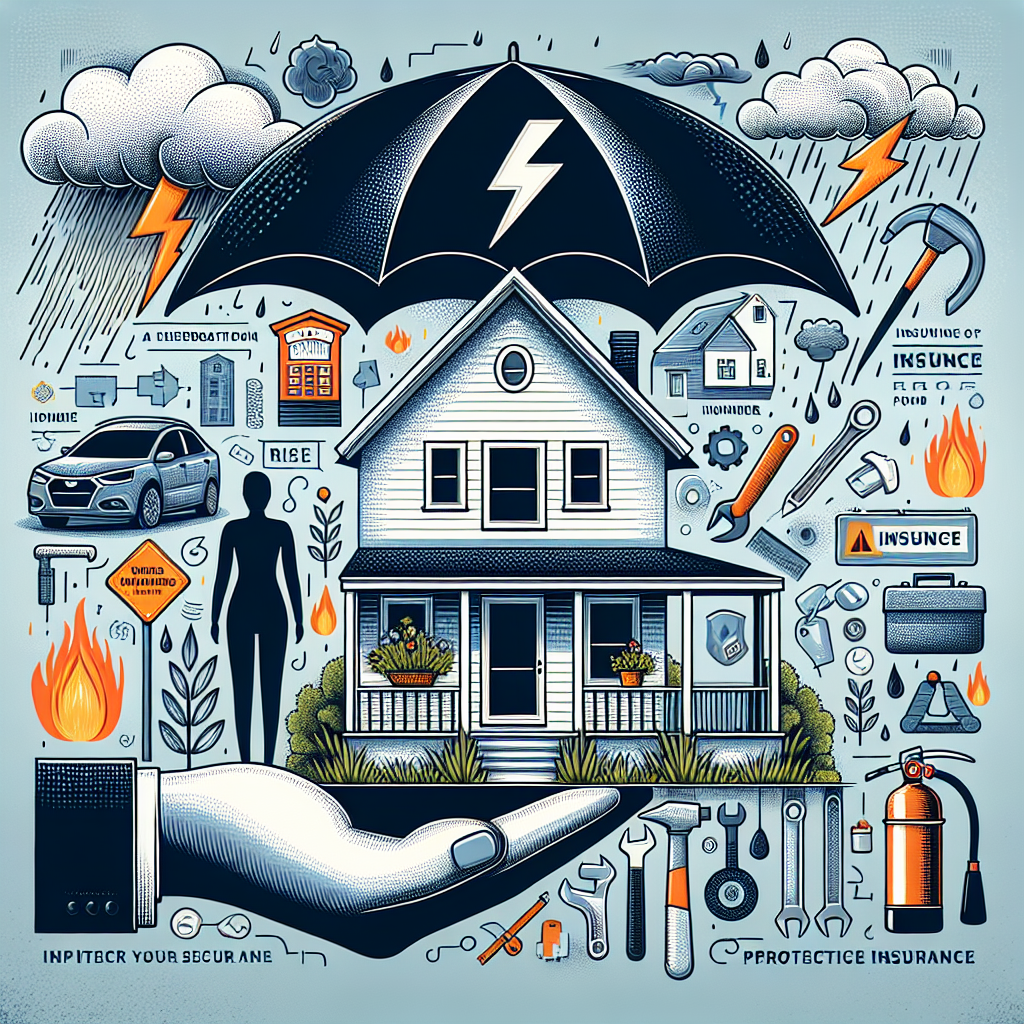Filed under Home Insurance on
What Coverage Should I Get for Home Insurance

If you’re asking yourself, What Coverage Should I Get for Home Insurance, you’re already doing one of the smartest things a homeowner can do: planning before a claim happens. The right policy is more than a checkbox. It’s a blueprint for rebuilding your life after a fire, windstorm, theft, or lawsuit, and it should reflect today’s construction costs, local risks, and your personal financial picture.
In this guide, we’ll unpack What Coverage Should I Get for Home Insurance step by step, translating policy jargon into clear choices. You’ll learn what each coverage does, how much you may need, which endorsements are worth it, and how industry trends affect your decisions.
Understanding policy forms: the foundation of your protection
Before limits and deductibles, get familiar with policy “forms.” Most standalone home policies use standardized frameworks with different breadths of coverage.
- HO-3 (Special Form): The most common for single-family homes. It covers your dwelling on an “open perils” basis (everything is covered except what’s excluded) and personal property on a “named perils” basis (specific causes like fire, theft, wind). It’s robust but has gaps you can address with endorsements.
- HO-5 (Comprehensive Form): A broader version that typically provides “open perils” coverage for both the dwelling and personal property and often includes higher sublimits for certain items. If you keep higher-value belongings or want fewer gray areas, it’s worth pricing.
- HO-6 (Condo Unit Owners): Designed for condo owners. It covers interior finishes and personal property and fills gaps left by the association’s master policy. Understanding your master policy type is essential.
- HO-4 (Renters): For tenants. It covers personal property and liability but not the building structure.
- HO-8 (Modified): Designed for older or unique homes where replacement cost estimation is tricky; may insure at market or functional value. Understand the tradeoffs carefully.
If your question is What Coverage Should I Get for Home Insurance, start by confirming you’re on the right policy form for your property type and risk tolerance. HO-5 costs more, but the broader protections can reduce claim disputes, especially for contents losses.
The six core coverages and how to size them
Most policies include six main coverage parts. Knowing how each one works will help you align limits with reality.
Coverage A – Dwelling
This is the backbone of your policy: the estimated cost to rebuild the home with similar materials and quality. It is not the purchase price or tax assessment. Use your insurer’s replacement cost estimator and also get an independent contractor’s perspective when possible. Construction labor and materials have been volatile in recent years; industry data from sources like the Bureau of Labor Statistics and major reconstruction cost indexes show sharp increases from 2020–2022 with mixed moderation since. Many carriers apply an “inflation guard” that automatically bumps your limit each year, but you should still review it annually.
- Aim for 100% replacement value. Underinsurance can trigger penalties (coinsurance) and leave you short.
- Consider Extended Replacement Cost (often 10%–50% above Coverage A) or Guaranteed Replacement Cost, which can cover cost spikes after a catastrophe when local prices surge.
- Add Ordinance or Law coverage (10%–50% of Coverage A) to pay for code-required upgrades during a rebuild. This is crucial for older homes.
Coverage B – Other Structures
Covers detached structures like fences, sheds, and detached garages, often set at 10% of Coverage A by default. If you have extensive fencing, an accessory dwelling unit, or substantial outbuildings, increase this limit.
Coverage C – Personal Property
Protects your belongings. Standard limits are typically 50%–70% of Coverage A. With HO-5 policies, coverage is often broader and includes replacement cost by default; otherwise, add a replacement cost endorsement so claims aren’t reduced for depreciation.
- Inventory your home with a room-by-room video and a simple spreadsheet. Keep a copy in the cloud.
- Know the “special limits” for jewelry, watches, firearms, silverware, cash, collectibles, and certain electronics. These caps are often low. Schedule high-value items (sometimes called “floater” coverage) for broader protection and no deductible.
- Ask about coverage for business property at home; it’s commonly sublimited unless endorsed.
Coverage D – Loss of Use (Additional Living Expense)
Pays for temporary housing, meals, and extra expenses when your home is uninhabitable after a covered loss. Some policies set this as a percentage of Coverage A; others use a time frame. Given long rebuild times in many markets, target coverage that can sustain 12–24 months of living costs. Check whether the policy pays “actual loss sustained” up to a time limit.
Coverage E – Personal Liability
If someone is injured or you’re found legally responsible for property damage, this coverage protects your assets and pays for defense costs. Default limits are often $100,000 or $300,000. Many experts suggest at least $300,000–$500,000, especially if you own a home, have savings, or host guests. Consider a personal umbrella policy (often starting at $1 million) for added peace of mind; it’s typically affordable and extends beyond home to auto and other exposures.
For homeowners wondering, What Coverage Should I Get for Home Insurance, liability is where relatively small premium increases can buy substantially more protection against uncommon but severe losses.
Coverage F – Medical Payments to Others
Medical payments cover small injuries to guests regardless of fault, often $1,000–$5,000. It can diffuse minor incidents without going through liability. Opt for the higher end if you entertain frequently.
Perils and regional risks: tailor to your geography
Policies cover many dangers but exclude some big ones that require separate policies or endorsements.
- Flood: Standard home insurance does not cover flood (rising water from outside). Consider a policy through the National Flood Insurance Program or private flood insurers. Industry and FEMA data show a meaningful share of flood claims occur outside high-risk zones, so don’t assume you’re safe because you’re not in a Special Flood Hazard Area.
- Earthquake: Typically excluded and purchased as a separate policy or endorsement, especially relevant on the West Coast and some central U.S. regions. Deductibles are often a percentage of the dwelling limit.
- Wind/Hail and Hurricane: In coastal and hail-prone states, policies may carry separate, higher deductibles for wind/hail or hurricanes. Understand whether your policy uses “named storm,” “wind,” or “hurricane” triggers and whether the deductible is a flat dollar amount or a percentage.
- Wildfire: Coverage is usually included, but underwriting has tightened in high-risk zones. Hardening your home (ember-resistant vents, defensible space) can improve insurability and sometimes unlock discounts.
- Freeze and Water Damage: Sudden and accidental discharge is typically covered; long-term seepage and maintenance are not. Consider smart water-leak sensors to prevent losses and earn credits.
Personal property: how much and what valuation?
Getting personal property right takes more than a guess. Start with a detailed inventory. Walk through each room and closet, record a quick video, and list major items with estimates. Then decide how they’re valued.
- Replacement Cost vs. Actual Cash Value (ACV): Replacement cost pays what it costs to buy new today; ACV deducts for depreciation. Replacement cost is a must-have for most homeowners. Verify it applies to both dwelling and contents.
- Special Collections: Art, rare wine, memorabilia, musical instruments, or high-end bikes are often better insured on a separate, scheduled policy with agreed values.
- Off-Premises Coverage: Belongings outside your home (in a car, dorm, or hotel) are usually covered, but sometimes at reduced limits. Check specifics if you have students away at college or work remotely from varied locations.
Loss of use: plan for real-world timelines
Rebuilds commonly take longer than expected, especially after widespread storms when contractors are booked and materials are scarce. Review your Loss of Use terms carefully. If it’s expressed as a percentage of Coverage A, ask your agent whether that amount would realistically cover your local rents for a year or two. If your policy uses “actual loss sustained” with a time cap (e.g., 12 or 24 months), verify that the cap is long enough for your market.
Liability and lifestyle exposures
Your liability limit should reflect your financial life. If you have a pool, trampoline, short-term rental activity, frequent gatherings, or certain dog breeds, you may need higher limits or special endorsements.
- Short-Term Rentals and Home-Sharing: Standard policies may limit or exclude coverage when you rent to others. Many insurers now offer home-sharing endorsements that adjust both property and liability coverage. If you host, ask specifically.
- Home Businesses: If clients visit your home or you store inventory, standard coverage may be inadequate. Consider a home business endorsement or a small business policy.
- Umbrella Coverage: Umbrellas are a cost-effective way to add $1–$5 million in protection above your home and auto liability. They usually require minimum underlying limits (e.g., $300,000 on the home policy).
Deductible strategy: balance savings and risk
Your deductible is what you pay out of pocket per claim. Higher deductibles can lower your premium, but choose a level you’re comfortable covering any day of the week—ideally from an emergency fund.
- All-Perils vs. Special Deductibles: Some policies split deductibles: one for most perils and a higher percentage for wind/hail or hurricanes. Evaluate the combined impact on your risk.
- Claim Frequency: Because home insurance is priced for catastrophic losses rather than routine maintenance, many homeowners pick a higher deductible to discourage small claims that can raise premiums.
- Roof Claims: In certain states, wind/hail losses are common and some carriers settle older roofs on an ACV basis unless you add a replacement cost endorsement. Clarify your roof settlement terms.
Endorsements worth pricing
Part of answering What Coverage Should I Get for Home Insurance is deciding which add-ons meaningfully reduce your risk. Not every endorsement fits every home, but several are widely valuable.
- Water Backup/Sump Overflow: Covers damage from backed-up drains or sump failures—commonly excluded otherwise. Limits range widely; choose an amount that reflects basement finishes and mechanical systems.
- Service Line Coverage: Pays to repair buried utility lines (water, sewer, electric) from the street to your house. Breaks are more common than many expect and repairs can be expensive.
- Equipment Breakdown: Extends coverage to mechanical or electrical failures of systems like HVAC, appliances, and smart home devices. It’s not a maintenance plan, but it can fill gaps.
- Ordinance or Law: Boost this if your home is older or your municipality has strict codes. It funds required upgrades during a covered repair.
- Identity Theft and Cyber: Provides expense reimbursement and support services if your identity is compromised or you face certain cyber incidents at home.
- Matching Siding/Roof: Helps ensure undamaged areas are replaced to match new materials after a partial loss, addressing a common aesthetic gap.
- Additional Mold/Fungi Coverage: In humid climates, available sublimits may be low; an endorsement can raise them.
Market trends shaping coverage and price
Insurance doesn’t exist in a vacuum. Materials inflation, labor shortages, more frequent severe weather, and higher reinsurance costs have made coverage both more important and more scrutinized. The Insurance Information Institute reports that wind and hail remain among the most common claim types, and roughly one in twenty insured homes experiences a claim in a typical year. Meanwhile, catastrophic events can cause localized price surges for labor and materials, underscoring the value of extended or guaranteed replacement cost and adequate Loss of Use.
As carriers refine underwriting, they’re also differentiating by roof age and type, wildfire mitigation, water-loss history, and smart home protections. Simple upgrades—impact-resistant roofing in hail zones, hardened vents and defensible space in wildfire areas, or automatic water shutoff valves—can improve both your resilience and your insurability. The right responses to What Coverage Should I Get for Home Insurance will evolve as these trends continue.
How to tailor a policy: a step-by-step framework
Translating options into a right-sized policy is easier with a process. Here’s a practical checklist you can complete with your agent or broker.
- Confirm your policy form. Compare HO-3 and HO-5 quotes if available. The broader form may simplify claims, especially for contents.
- Dial in Coverage A (dwelling). Use at least two rebuild estimates: your insurer’s tool plus a contractor’s or independent estimator’s view. Verify square footage, story count, custom features, and finishes.
- Add an inflation buffer. If guaranteed replacement cost isn’t available, choose extended replacement cost at the highest reasonable level and verify the inflation guard percentage.
- Set Coverage B and C. Raise other structures if you have significant fencing or outbuildings. For personal property, target 60%–70% of Coverage A if your home is fully furnished, then adjust based on an inventory.
- Choose replacement cost for contents. If your policy defaults to ACV, add the replacement cost endorsement.
- Evaluate Loss of Use. Price local rentals and set a limit or time frame that covers 12–24 months of housing and elevated living costs in your area.
- Increase liability to match your assets and exposures. Start at $300,000–$500,000 and consider a $1–$2 million umbrella if you have substantial assets or higher-risk features (pool, rentals, frequent guests).
- Select a deductible strategy. Pick the highest all-perils deductible you can comfortably pay today, and be aware of any separate wind/hail or hurricane deductibles.
- Layer endorsements thoughtfully. Water backup, ordinance or law, service line, equipment breakdown, and matching siding/roof are common high-value adds. Schedule jewelry and collectibles.
- Address excluded perils. Evaluate separate flood and earthquake policies based on your location and appetite for risk.
- Mitigate and save. Install monitored leak sensors, upgrade to impact-resistant roofing, maintain defensible space, and ask about discounts for protective devices.
- Review annually. Life changes, renovations, and market shifts affect your needs. Revisit your limits, inventory, and deductibles each year or after major projects.
A structured approach ensures your answer to What Coverage Should I Get for Home Insurance is specific to your home rather than a generic template.
Common pitfalls to avoid
- Confusing market value with rebuild cost. Land value and interest rates affect market prices; your policy should follow what it costs to reconstruct the house itself.
- Skipping ordinance or law. Code upgrades can add significant costs during reconstruction, especially for electrical, plumbing, seismic, or energy standards.
- Accepting ACV for roofs or contents without realizing it. You might think you’re fully covered until depreciation slashes your payout.
- Overlooking sublimits. Jewelry, fine arts, firearms, and business property often need separate scheduling to be fully covered.
- Ignoring separate deductibles. A 2% hurricane deductible on a $500,000 home is $10,000 out of pocket. Budget accordingly.
- Not documenting belongings. After a loss, a quick video inventory is worth its weight in gold for both memory and claims support.
- Assuming flood isn’t your problem. A substantial portion of flood claims occur outside high-risk zones. If heavy rain can pool around your home, assess flood coverage.
Condo and townhome specifics
Condo owners face a different calculus since the association’s master policy covers common elements. Read your master policy and bylaws.
- Master Policy Type: “Bare walls,” “single entity,” or “all-in” determine whether cabinets, flooring, and fixtures are your responsibility. Your HO-6 should fill the gaps.
- Loss Assessment: Add coverage for your share of assessments levied by the association after a covered loss, including deductibles on the master policy.
- Betterments and Improvements: If you’ve upgraded finishes, increase your building property limit inside your unit.
- Water Backup and Unit-to-Unit Leaks: Clarify responsibility for damage originating in neighboring units and consider endorsements accordingly.
Realistic budgeting and shopping tips
- Bundle smartly. Packaging home with auto often brings meaningful discounts, but still compare net premiums and coverage quality.
- Use an independent agent. They can quote multiple carriers, explain differences, and advocate at claim time.
- Ask about roof age and material impacts. Some carriers offer better terms for newer roofs or Class 4 impact-resistant shingles.
- Share mitigation steps. Document alarm monitoring, water sensors, wildfire hardening, or plumbing and electrical updates to capture credits.
- Check financial strength and claim reputation. Price matters, but so does the carrier’s ability to pay and settle fairly.
Quick answers to common questions
- Is my mortgage amount the same as my dwelling limit? No. Set Coverage A to the cost to rebuild the structure, which may be higher or lower than your loan balance.
- Do I need flood insurance if I’m not in a flood zone? Traditional “100-year” zones don’t capture all risk. If heavy rain or drainage issues could affect your home, flood insurance is worth pricing.
- How often should I update my policy? Review annually and after renovations, major purchases, or life changes. Update your inventory regularly.
- Will small claims raise my premium? Possibly. Home insurance is designed for larger, unexpected losses. Consider self-funding minor fixes to protect your claim history.
- How do I estimate personal property? Start with 50%–70% of Coverage A as a baseline, then refine with an inventory. Schedule valuables separately.
A sample coverage blueprint to discuss with your agent
- Policy Form: HO-5 if competitively priced; HO-3 with key endorsements otherwise.
- Dwelling (A): 100% replacement cost verified by a current estimator plus 25%–50% extended replacement cost; inflation guard enabled.
- Other Structures (B): Increase beyond 10% if you have extensive fences or outbuildings.
- Personal Property (C): 60%–70% of A, replacement cost valuation, with scheduled items for jewelry, art, or collectibles.
- Loss of Use (D): Actual loss sustained for up to 24 months where available, or a limit that matches 12–24 months of local rents.
- Liability (E): $500,000, plus a $1–$2 million umbrella if you have assets or elevated exposures.
- Medical Payments (F): $5,000 for frequent guests.
- Deductibles: A higher all-perils deductible you can pay comfortably; verify wind/hail or hurricane percentage deductibles.
- Endorsements: Water backup, ordinance or law at 25%–50%, service line, equipment breakdown, matching siding/roof, increased mold/fungi as needed.
- Catastrophe Policies: Separate flood and, if applicable, earthquake coverage based on your location.
Bringing it all together
Home insurance is about transferring the right risks—not every risk at any price. Start with a strong policy form, right-size your rebuild and contents limits, elevate liability to match your life, and choose endorsements that address your home’s vulnerabilities. Use an annual review to keep pace with construction costs and evolving weather patterns.
The smartest answer to What Coverage Should I Get for Home Insurance is specific to you, but it follows a consistent logic: protect the structure to modern standards, replace your belongings without depreciation, defend your assets with adequate liability, fund a realistic period of displacement, and close common gaps with targeted endorsements. With that framework, you’ll carry a policy built to do its job when you need it most.
If you’re still weighing the details and thinking, What Coverage Should I Get for Home Insurance, bring this checklist to an experienced independent agent. A short conversation backed by accurate home data can turn a complicated decision into a confident one—and ensure that the coverage you buy today will stand up to tomorrow’s realities.




